Simultaneous continuous, non-chromatographic monitoring and discrete chromatographic monitoring of polymerization reactions
Automatic continuous non-chromatographic monitoring and discrete chromatographic monitoring were coupled together for the first time and used to monitor free radical and controlled radical polymerization reactions. This was achieved by adding a multi-detector Size Exclusion Chromatography (SEC) system to the patented (US patent 6052184 and US patent 6653150, other patents pending) ACOMP platform (Automatic Continuous Online Monitoring of Polymerization reactions). The fact that the reactor solution is already pre-conditioned in the ACOMP front-end to the concentration levels used in SEC makes direct coupling possible.
Kinetics from two different types of reactions, Reversible Addition Fragmentation Transfer (RAFT) and free radical polymerization of butyl acrylate were studied, including the production of a bimodal population.
Advantages
- Addition of multi-detector SEC enhances the already massive data gathering power of ACOMP. SEC offers the full molecular weight distribution, as opposed to the average values Mw and Mw,inst that ACOMP offers.
- The ability of the SEC approach to furnish meaningful molecular weight distributions will depend both on the details of the reaction and which column(s) are used. In the current work a single column was not able to directly resolve a narrowly separated bimodal distribution, but the resulting distribution could be resolved into bimodal components with a model dependent assumption.
- In the initiator boost reaction here, the continuous, non-chromatographic approach was able clearly to detect the onset of MWD bimodality without any model assumptions, in all its detectors and quantities; conversion, Mw, and [h]w, whereas the SEC detection, with only a single column, could not directly detect the bimodality. Addition of extra columns could improve resolution, but at the expense of SEC sampling frequency.
- ACOMP-SEC will also be well suited for living reactions that are slow, so that more data points per unit of conversion can be obtained.
- Using small pore columns, the SEC approach will probably be useful in copolymerization, and possibly terpolymerization, for monitoring the conversion of comonomers when other spectroscopically interfering agents are used in the reaction, such as RAFT agents, copper ions, etc.
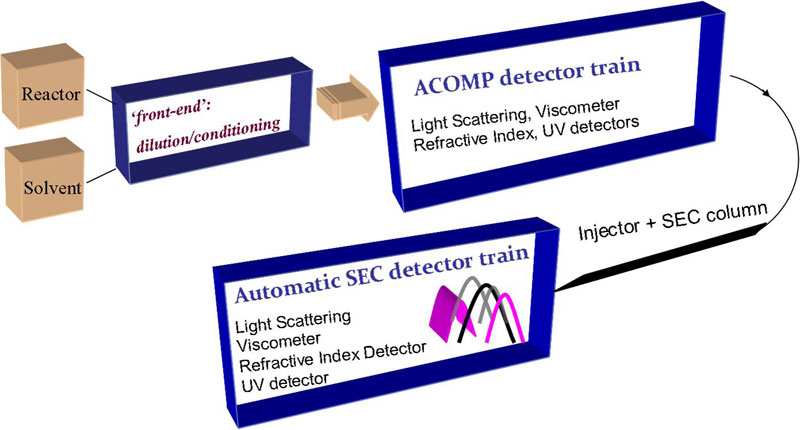
ACOMP-SEC Set-up
a) RAFT polymerization of butyl acrylate
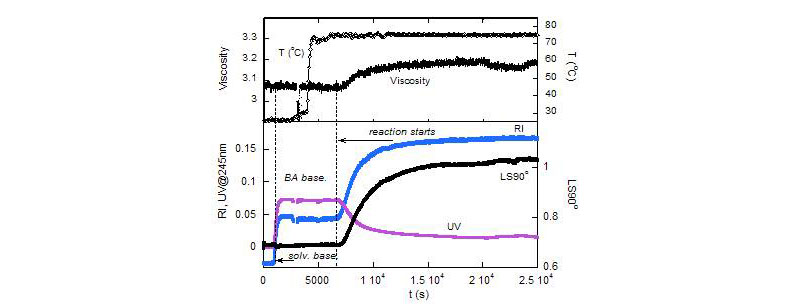
ACOMP signals change as the reaction proceeds
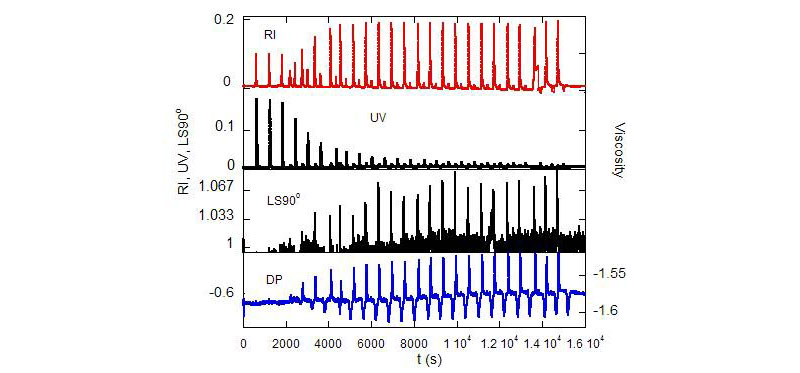
SEC Detectors follow the reaction at the same time
b) Free radical polymerization of butyl acrylate with an initiator boost
Bimodal molecular weight distributions in free radical reactions. Frequently, extra initiator is added during free radical reactions, sometimes to ensure reaction completion or to 'scavange' residual monomers. Such initiator 'boosts' can also produce bimodality in the WMD, if the initiator is added at early or intermediate levels of conversion.
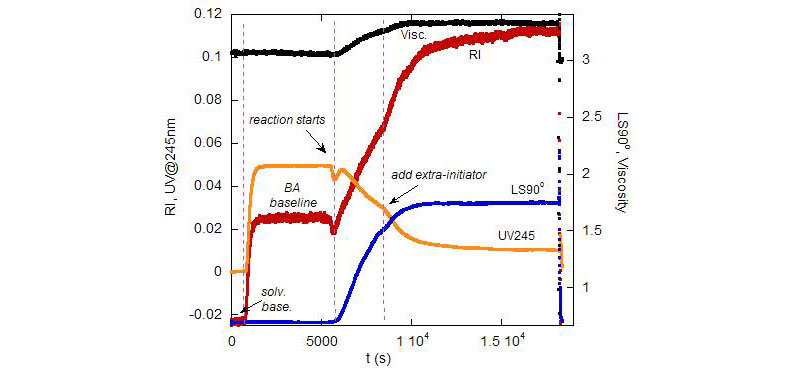
ACOMP signals follow any change in the reaction mechanism
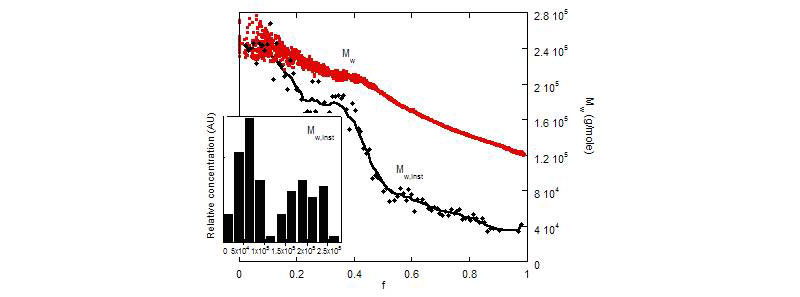
The effect of the initiator boost: Mw and instantaneous weight average molecular weight Mw, inst vs. (=dMw/df) vs. monomer conversion, f. The inset shows a histogram of the mass distribution from this continuous data, where the bimodality is striking
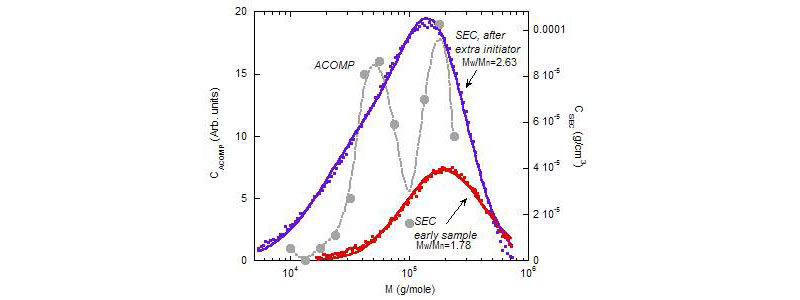
MWD for early and late conversion together with log-normal fits. The dotted line shows the logarithmically binned Mw, inst data from ACOMP, which clearly reveals the MWD bimodality which the SEC data does not directly show
